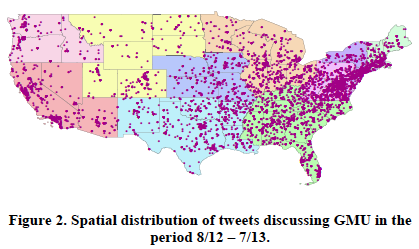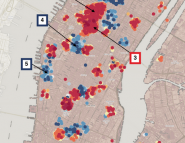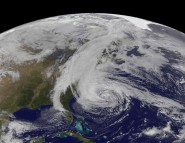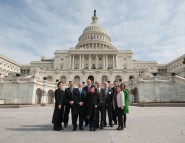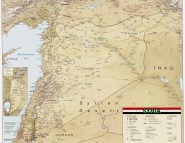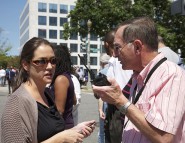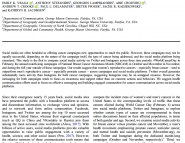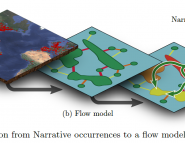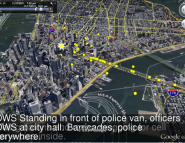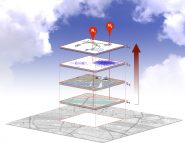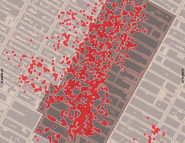Posted: March 7, 2014 at 5:04 pm, Last Updated: January 27, 2017 at 3:20 pm
 Readers of the blog know that we have an interest in social media, and how through it we can gain an understanding of society at large. The question is how does the cyber community reflect the corresponding physical community? To this end, papers from 6th ACM SIGSPATIAL International Workshop on Location-Based Social Networks which was held in conjunction with the 21st ACM SIGSPATIAL conference have just come out on the ACM Digital Library. We presented a paper at the conference entitled “Comparing the Spatial Characteristics of Corresponding Cyber and Physical Communities: A Case Study.” The abstract of the paper is as follows:
Readers of the blog know that we have an interest in social media, and how through it we can gain an understanding of society at large. The question is how does the cyber community reflect the corresponding physical community? To this end, papers from 6th ACM SIGSPATIAL International Workshop on Location-Based Social Networks which was held in conjunction with the 21st ACM SIGSPATIAL conference have just come out on the ACM Digital Library. We presented a paper at the conference entitled “Comparing the Spatial Characteristics of Corresponding Cyber and Physical Communities: A Case Study.” The abstract of the paper is as follows:“The proliferation of social media over the past few years is presenting us with unique opportunities to sample opinions and interests at spatial and temporal resolutions previously unheard of. In order to make best use of this information though, we need a better understanding of the degree to which the cyber community that is observed through them can serve as a proxy for the corresponding physical community. In this paper we are making a contribution towards this issue by presenting a case study in which we compare spatial characteristics of a community both in the physical and cyber spaces. The key findings of our analysis relate to the selection of an appropriate level of spatial aggregation for analyzing social media content, and on the effect in the level of participation of the distance from the point of interest.”
- Lu, X., Croitoru, A., Radzikowski, J, Crooks, A. T. and Stefanidis, A. (2013), Comparing the Spatial Characteristics of Corresponding Cyber and Physical Communities: A Case Study, 6th ACM SIGSPATIAL International Workshop on Location-Based Social Networks, Orlando, FL, pp 11-14. (pdf)

